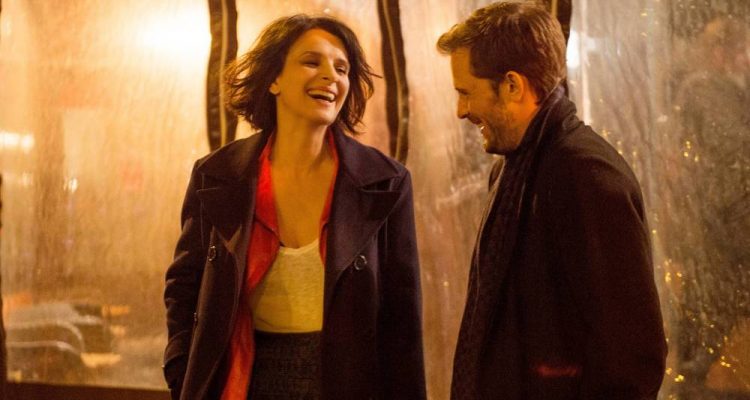Give any cinephile worth their salt the keys to one of the major European festivals and you can bet they’ll find a high-profile slot for the latest film by Claire Denis. However, the film festival gatekeepers deny a Competition berth to one of the best regarded filmmakers in contemporary French cinema with surprising regularity. She’s only competed at Cannes once — and that was over 25 years ago — although an argument could be made that some of her recent work is perhaps too delicate (“35 Shots of Rum”) or too raw (“Bastards”) for the scrutiny that such a spotlight invites.
Whatever the behind-the-scenes politics may be, this year it fell to the Director’s Fortnight sidebar of the Cannes Film Festival to welcome “Let the Sunshine In” (formerly known as “Dark Glasses“) — as the opening film, no less. Pitched by artistic director Edouard Waintrop as “a comedy of language,” this description is somewhat of misnomer. Denis’ latest — although nominally a comedy — ain’t all that funny, and it’s not so much “about language” as the film is full of language, as protagonist Isabelle (Juliette Binoche) chatters her way through a succession of incompatible lovers. If Denis’ body of work is notable for articulating emotions through gestures and movement, rather than dialogue, she seems determined to make up for lost words with “Let the Sunshine In.” All in, the film is an unprecedented misfire for Denis.
A loose adaptation of philosopher Roland Barthes’ “A Lover’s Discourse: Fragments,” “Let the Sunshine In” puts forth the text’s ideas through Binoche’s Isabelle, a divorced painter living in Paris who is searching to satisfy her desires, both romantic and sexual. The film opens mid-coitus during an unsatisfactory sexual encounter between Isabelle and a married banker (Xavier Beauvois). Although Denis doesn’t shy away from sex — its rawness is perhaps the film’s most interesting quality, particularly in the opening scene — any and all romantic relations quickly devolve into empty banter. Talking in a car with her other prominent lover, an actor (Nicolas Duvauchelle), Binoche’s character remarks that their exchange reduces to saying one thing and then its opposite — a note which “Let the Sunshine In” hits ad nauseum. Truth be told, the film is regularly tongue-in-cheek about its own chattiness, but this cognizance doesn’t quite give the tedious dialogue a pass.

“Let the Sunshine In” again finds Denis working with her regular collaborators on picture and sound, director of photography Agnés Godard and composer Stuart A. Staples of the band Tindersticks. Regrettably, the project gives neither talent a great deal to chew on; the majority of the film is a string of conversations composed in a series of close-ups and two-shots. Godard does her best to keep things interesting, most notably in an early scene with Xavier Beauvois and Juliette Binoche in a upscale bar. In an extended take, the camera pans back and forth between tight framings of the two as he pompously expounds on the nature of their relationship. When the banker finally states that he’ll never leave his wife, the framing shifts to a two-shot, draining the moment of any illusions of romantic intimacy.
Throughout this long take, the yellow mood lighting of the bar keeps the shot visually pleasant, but it would be a stretch to describe this encounter — or any other in the film, for that matter — as “atmospheric” in the fashion that audiences have come to expect from Denis. This extends to Staples’ largely anonymous score, which is only lightly applied and is of a piece with the jazz music that dominates the spaces that Isabelle frequents.
To better illustrate exactly how off-kilter “Let the Sunshine In” is in comparison to Denis’ existing body of work, consider its nightclub dance sequence, which the director has previously sublimely orchestrated in “35 Shots of Rum” and, of course, with Denis Lavant’s classic outburst of motion at the end of “Beau Travail.” Here, Isabelle’s dance with a local man never sparks to life, instead bent to the principal character’s desperate grasps at meaningful connections. The song, Etta James’ “At Last,” is clearly after Isabelle’s heart, who has a poster of the singer pinned above her bed. We get the joke — the potential love interest is clearly skeezy, especially next to Isabelle’s art-world compatriots — but the impending disappointment saps the pleasure out of this reprieve from dialogue.

The credits of the film roll over a conversation with Gerard Depardieu’s David (a glorified cameo in a film that’s full of them), showing that “Let the Sunshine In” doesn’t seem to know when to quit. Here, the play on audiences’ assumptions is worthy of the filmmaker; Depardieu seems to be playing a psychologist, cheekily revealed to be a fortune teller. When it becomes clear that the snake oil he is selling Isabelle is the hope of eventual tryst with her, she remains clueless, and the final note of the film turns sour.
Given that there was less than five months between the beginning of principal photography to the film’s premiere at Cannes, Claire Denis brought “Let the Sunshine In” to the festival on a remarkable timetable. This tight turnaround is exceptionally impressive considering the director typically goes years between films (her last film, “Bastards,” debuted in 2013). However, hopefully with her next effort, Denis takes her time, and focuses more on the image than the words. [C-]
Check out the rest of our coverage from the 2017 Cannes Film Festival by clicking here.

